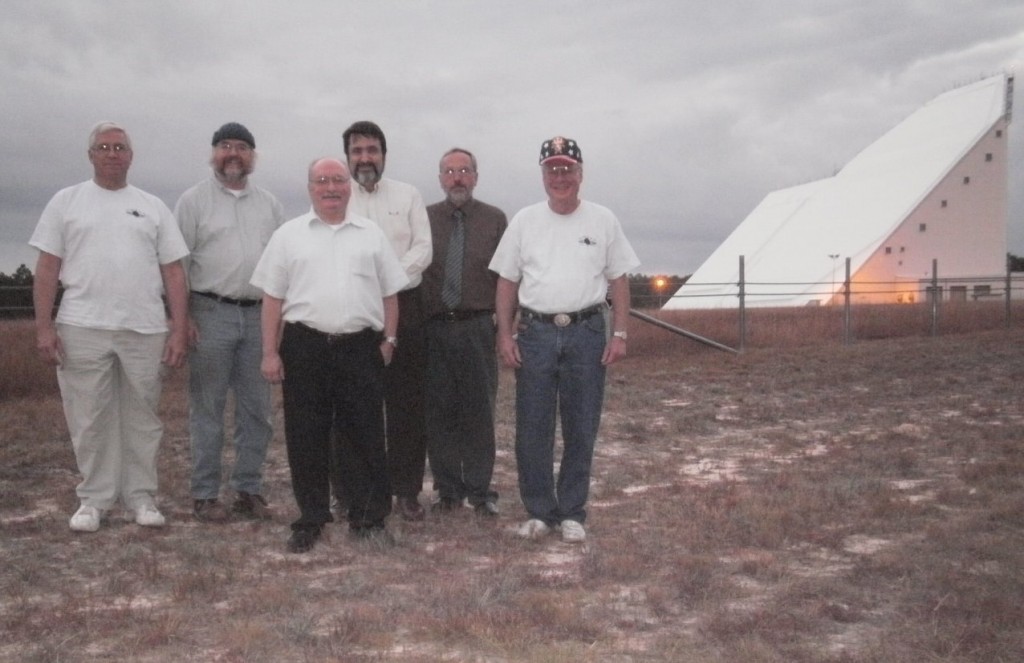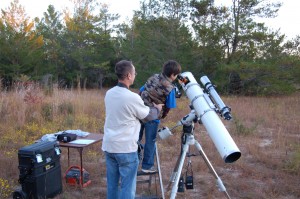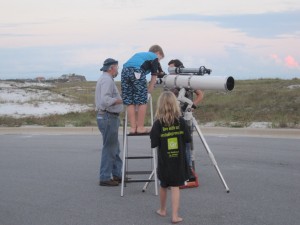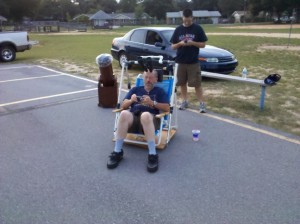Members of the NWFAA spent a couple of hours visiting a local observatory Sunday. It just wasn’t an optical observatory. Club member Dennis Hausch arranged and conducted a tour of the AN/FPS-85 radar site on Eglin A.F.B.
A couple of our members use their optical telescopes to track and identify asteroids, some of which are classified as ‘near earth objects’. The site C-6 radar is tasked to track man-made ‘near earth objects’ as well as some ‘deep space objects’. Here we had a clash of terminology. The C-6 definition of deep space object is anything out at geostationary/geosynchronous orbit while astronomy’s general definition of a deep space object is anything outside of the earth’s gravitational influence. An asteroid at geostationary/geosynchronous orbit is just about as ‘near earth’ as it gets without running into the planet.
The tour started with a presentation of site history and current mission. The next stop was to the maintenance walkway on the top of the antenna complex; the view is quite impressive. Computer rooms, hardware bays, maintenance labs and operations stations were visited and discussed. As several of our members are old radar heads from way back, the discussions got technical several times, with appropriate war stories retold.
We would like to thank the men and women of the 20th Space Control Squadron ops crew as well as the duty maintenance personnel for their time and informative briefings.




